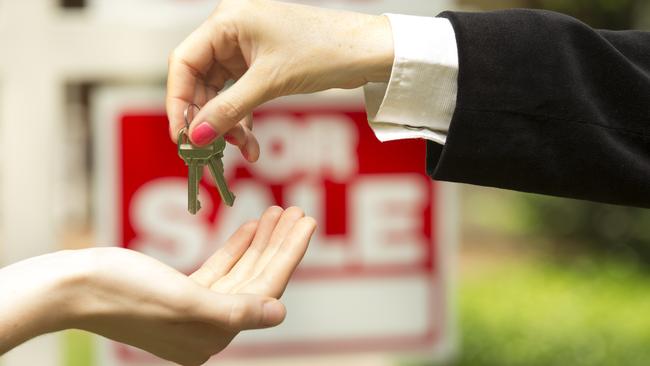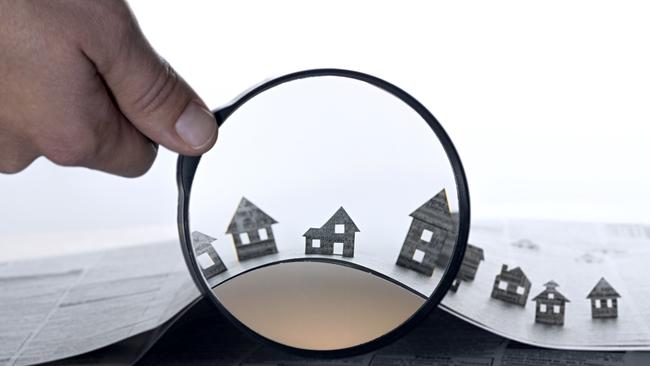Locked out: It’s all gone horribly wrong for generation rent
HOUSE prices may be dropping in Sydney and Melbourne, but that doesn’t mean buying a home is going to get any easier.

CALL it the depressing reality for generation rent.
A cooling market may be leaving mortgage-holders in a lather about interest rates, but at the bottom of the housing ladder, nothing’s changed for some renters: they’re doomed to pay off someone else’s mortgage forever.
That’s the grim assessment for a generation of renters in Sydney and Melbourne after a study of census figures by the Australian Population Research Institute.
In those two cities, the housing supply problem is so critical that most young people can’t afford homes in established suburbs, and, unlike their parents, they’ll never be able to, the Immigration and the Housing Affordability Crisis in Sydney and Melbourne study concluded.
“It’s all gone horribly wrong,” demographers Ernest Healy and Bob Birrell said of approaches of successive government to curb the housing affordability crisis that favour established homeowners over those trying to get into the market.
“Property owners are feasting on extraordinary capital gains at the expense of young people who, in Sydney and Melbourne, will never experience any similar benefit because they cannot get onto even the lowest rung of the property ladder,” the pair wrote.
“The result is an intergenerational divide in which the younger generation have diminishing prospects of attaining the housing their parents’ generation enjoy.”
Would-be buyers trying to secure houses for their family, or soon-to-be family, are having their hopes dashed by a “wall of money” behind those already in the market.
The proportion of renters has risen sharply amid the housing affordability crisis, and the researchers suggest reducing immigration is the best way to ease housing demand.
They also recommend a rethink of tax incentives such as capital gains and negative gearing, which they say help investors, but work against the younger generation of hopeful buyers.
HOW DID IT HAPPEN?
“First, successive Australian governments have kept in place significant tax incentives for owner-occupiers to upgrade and investors to purchase existing residential property. Second, the Coalition government has maintained very high migration levels, with around two-thirds of the net intake currently locating in Sydney and Melbourne,” the researchers said.
“Migrants are the main contributors to the growth in both cities’ populations of over 100,000 each year.”

Looking at the past two census results, the study found rental households for people in Sydney aged 30 to 34 years old jumped from 48 per cent to 53 per cent in the five years to 2016.
In Melbourne, the jump was from 43 per cent to 48 per cent.
That’s against a background of huge surges in house purchases by owner-occupiers who are upgrading, and by investors over the past few years.
“The total mortgage debt owed for such purchases in Australia has been increasing at $100 billion a year, most of it being for established houses in Sydney and Melbourne,” according to the study.
“Until very recently, about half of this increased mortgage debt has been incurred by investors and the rest by owner-occupiers.
“The former benefit from the discount available for capital gains on their investment property and the negative gearing tax concessions where their property delivers an income loss.”
It says only a small proportion of the owner-occupiers are first-home buyers.
“Many of these owner-occupiers are upgrading their housing with an eye to benefiting from the capital gains that Sydney and Melbourne’s housing markets are delivering.
“They know that the capital gains that result are immune from taxation as long as they occupy their upgraded home.”
The study says the massive injection of funds combined with the surge in population numbers meant there was only one way housing prices in Sydney and Melbourne could go, and that was up.
HIGH RISE APARTMENTS NO SOLUTION
Equally sobering is their summation that the housing affordability crisis is close to the worst in the developed world.
When median prices were compared to household incomes, only the cities of Vancouver and Hong Kong were as bad or worse, the researchers concluded.
And it’s set to get worse, because most investors buy established houses, not new ones, and any boost in housing supply has come mainly from high-rise apartments.
High-rise apartments, they say, “are largely irrelevant to the housing needs of most new resident and migrant households”.
“Huge numbers [of high-rise apartment blocks] have been constructed, yet prices for detached housing continue to rise in both cities,” they write.

“The reason is that most new households (including migrants) want family-friendly housing.
“Apartments are unsuitable. Our analysis of occupants of high-rise apartments shows that barely four per cent of these apartments in inner Sydney and Melbourne are occupied by couples or singles with children.”
Few Australian families historically regard apartments as the proper place to raise kids, but the study observes that even for those who are prepared to try it, “almost all of the apartments being built are far too small for family living”.
“It costs developers $800,000 to $1 million to put relatively spacious, two- to three-bedroom apartments of 80 to 100 square metres on to the market,” the study says.
“This is far beyond the budgets of most young families. As a result such apartments are rarely being built.”
‘IT’S ALL GONE HORRIBLY WRONG’
Australia’s plan to drive housing supply by reducing interest rates, keeping incentives for investors and maintaining the high immigration hasn’t worked, the authors say, because it reassures investors they would receive strong capital gains from property.
“It is all gone horribly wrong. Instead of the construction of family friendly dwellings, we have seen a wall of money invested in established detached houses,” the study says.
“The boost to supply that elites thought would occur has not eventuated. As we have seen, it mainly came in the form of high-rise apartments, which are largely irrelevant to the housing needs of most new resident and migrant households.”
The study cites census forecasts that in the next decade — even without immigration — the number of households in Sydney will increase by 109,570, and 161,990 in Melbourne.
At the current rate of immigration, 199,000 additional dwellings will be needed in Sydney and 193,000 in Melbourne by 2022 for immigrants.
It’s estimated immigrants will represent 64 per cent of Sydney’s growth in households, and 54 per cent of Melbourne’s growth.
“There is no easy solution to Sydney and Melbourne’s housing affordability crisis,” the study concludes.
“Some relaxation of zoning restraints may help. But only if there is parallel action to remove the tax incentives … and to reduce the competition for housing flowing from net overseas migration to both.”



